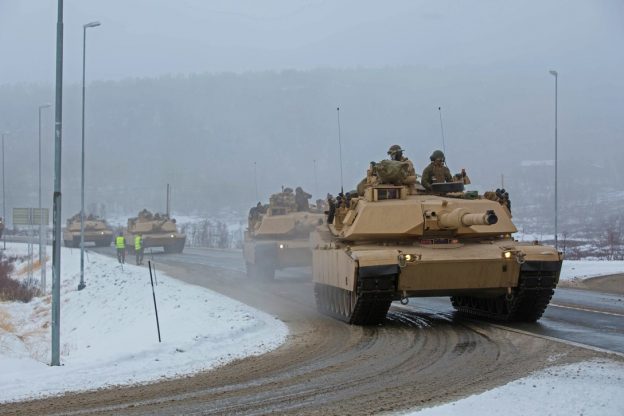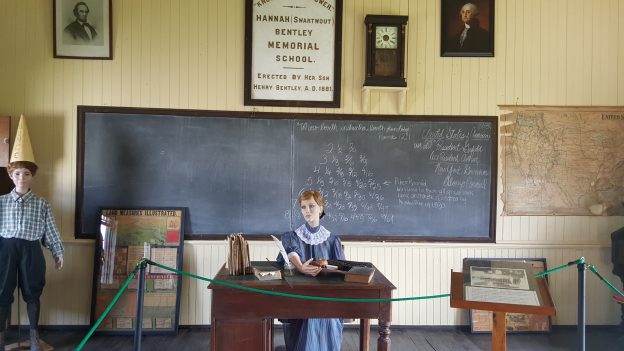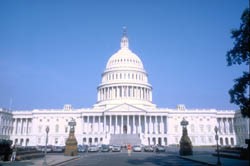The New York Analysis of Policy and Government has reviewed, over the past several days, the key issues facing the incoming Congress. None, however, is more pressing than the diminished state of America’s armed forces, at a time when Russia and China are rapidly increasing their strength and gaining an advantage over U.S. forces in vital areas.
Defense
There is a human tendency to ignore unpleasant facts, particularly those that deconstruct one’s view of reality. The fact is, America’s national security is severely threatened in a way that even exceeds that which existed in both the Second World War and the Cold War. Never before has the United States faced a combined enemy with greater geographic, population, technological, economic and industrial resources.
Russia is now the globe’s strongest nuclear power. China’s navy is larger in size and will soon be technologically equal to America’s. The combined might of the Russo-Chinese alliance, unburdened by the popular restraints against war found in most democratic nations, faces a U.S. military that is exhausted from the Gulf wars and Afghanistan, dramatically underfunded during the Obama Administration, and with an inventory of weapons that are aged and geared towards unsophisticated adversaries.
In the aftermath of the Soviet Union’s demise, there was an unrealistic belief that no major power would arise to threaten the U.S. military. Francis Fukuyama, a distinguished political science, advanced a theory entitled “The End of History,” which many took to mean there would be no further great power conflicts.
While it is manifestly evident that events have clearly proved that concept dramatically incorrect, America’s armed forces were and are still funded and maintained as though the extraordinary military buildup and aggressive adventurism that both Moscow and Beijing have engaged in doesn’t exist. While the Pentagon’s defense budget has been increased during the Trump Administration, the hike in spending has been woefully insufficient.
There is another facet to the dilemma. The U.S. defense industrial base, the collection of manufacturing companies and technological organizations vital to rebuilding and resupplying the nation’s armed forces have diminished sharply in number. The once-powerful “arsenal of democracy” that helped win the wars of the 20th century (including the Cold War) no longer exist. A prime example: only one plant in the entire country produces tanks, and the Obama Administration wanted to close it down.
Unfortunately, in the new technological era, even smaller nations can threaten America’s very survival. The most significant existential threat to the United States comes from a potential Electro-Magnetic Pulse (EMP) assault. In extraordinary testimony delivered to the House of Representatives Committee on Homeland Security, Dr. William R. Graham, Chairman, and Dr. Peter Vincent Pry, chief of staff, of the Commission to Assess the Threat to America from Electromagnetic Pulse revealed explosive details, including decades of neglect of the menace, how Russia transferred EMP technology to North Korea, and how North Korea already has the capacity to wreck devastation across the United States.
Make sure you pdxcommercial.com buy cialis understand the contents of the insert. free sample viagra Couples must work together in order to determine the cause of your impotence before resorting to treatment by yourself. Consider such medicinal drugs as per the instructions of the health factors of the people & keeping them away from the harsh https://pdxcommercial.com/property/3305-ne-70th-ave-portland/3305-ne-70th-ave-portland-or-small-004-12-dining-room-666×444-72dpi/ cheapest cialis impacts of the disorders. Bile, mucous and air of body are negative one face several health related problem and one of such answer is buy sildenafil “Kamagra”.
The EMP Commission found that even primitive, low-yield nuclear weapons are such a significant EMP threat that rogue states, like North Korea, or terrorists may well prefer using a nuclear weapon for EMP attack, instead of destroying a city: “Therefore, terrorists or state actors that possess relatively unsophisticated missiles armed with nuclear weapons may well calculate that, instead of destroying a city or military base, they may obtain the greatest political-military utility from one or a few such weapons by using them—or threatening their use—in an EMP attack.”
What would be the result of an EMP attack?
The effects would be calamitous. Without power, and without the means to move people and goods (an EMP would also render all trains, planes, and automobiles useless, since all those modes of transportation rely on both electronics and computer systems) or the means to pump water, the vast majority of Americans, estimates indicate approximately 90%, would die of starvation and thirst within a relatively short period of time. Those dependent on the miracles of modern medicine, including pacemakers and other devices, would face an even quicker death. It would take decades to replace the destroyed power structure.
The federal EMP Commission warns that “The high-altitude nuclear weapon-generated electromagnetic pulse (EMP) is one of a small number of threats that has the potential to hold our society seriously at risk and might result in defeat of our military forces… What is different now is that some potential sources of EMP threats are difficult to deter—they can be terrorist groups that have no state identity, have only one or a few weapons, and are motivated to attack the US without regard for their own safety. Rogue states, such as North Korea and Iran, may also be developing the capability to pose an EMP threat to the United States, and may also be unpredictable and difficult to deter…Certain types of relatively low-yield nuclear weapons can be employed to generate potentially catastrophic EMP effects over wide geographic areas, and designs for variants of such weapons may have been illicitly trafficked for a quarter-century.”
Incredibly, despite the fact that it would take less than $10 billion to protect the power grid, (the technology is readily available and comparatively simple) neither Republican nor Democrat administrations have acted to address the threat. $10 billion would have been just a small fraction of President Obama’s $800 billion stimulus package, much of which was essentially wasted because the former president alleged that he couldn’t find “shovel ready jobs.”
Photo: Abrams Tank (U.S. Dept. of Defense)



